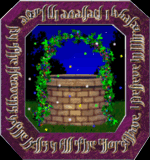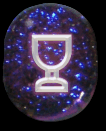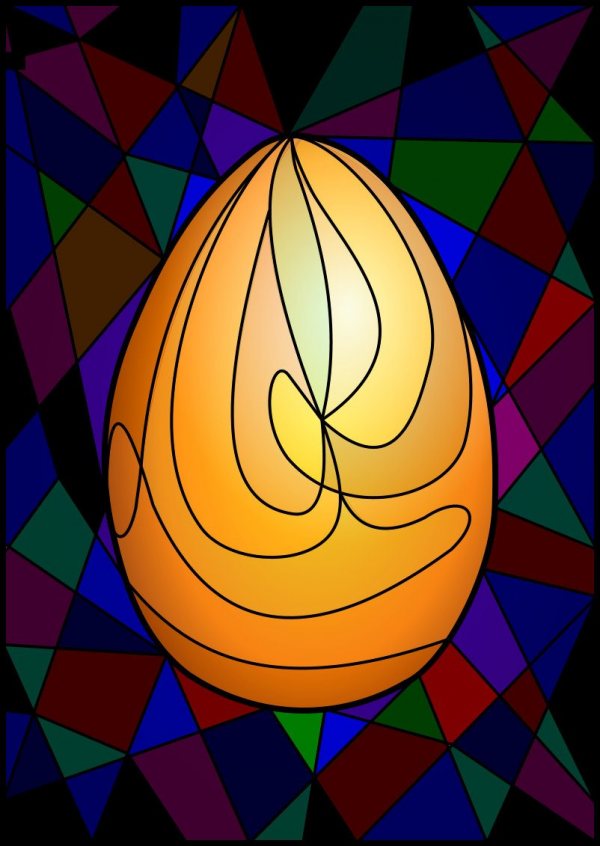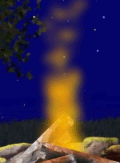Sea Weed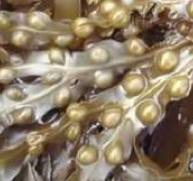
Of the more ordinary Sea Weeds (cryptogamous, or flowerless plants) some few are edible, though sparingly nutritious, whilst curative and medicinal virtues are attributed to several others, as Irish Moss, Scotch Dulse, Sea Tang, and the Bladderwrack.
Added Dec 1, 2010
| 8,627 Reads
It may be stated broadly that the Sea Weeds employed as remedial Herbal Simples owe their powers to the bromine, iodine, and sulphate of soda which they contain. Pliny and Dioscorides in their days extolled the qualities of various Sea Weeds; and practitioners of medicine on our sea coasts are now unanimous in pronouncing Sea Weed liniments, and poultices, as of undoubted value in reducing glandular swellings, and in curing obstinate sprains; whilst they administer the Bladderwrack, etc., internally for alterative purposes with no little success. Bits of Sea Weed, called Ladies' trees, are still to be seen as chimney ornaments in many a Cornish cottage, being fixed on small stands, and supposed to protect the dwelling from fire, or other mishaps. Irish Moss, or Carraigeen, is abundant on our rocky coasts, and is collected on the north western shores of Ireland, while some of it comes to us from Hamburg. Its chief constituent is a kind of mucilage, which dissolves to a stiff paste in boiling water, this containing some iodine, and much sulphur. But before being boiled in water or milk, the Moss should be soaked for an hour or more in cold water. Officinally, a decoction is ordered to be made with an ounce of the Moss to a pint of water: of which from one to four fluid ounces may be taken for a dose. This Lichen contains starchy, heat-giving nourishment, about six parts of the same to one of flesh-forming food; therefore its jelly is found to be specially sustaining to persons suffering from pulmonary consumption, with an excessive waste of the bodily heat. At one time the Irish Moss fetched as high a price as half-a-crown for the pound. It bears the botanical name of Chondrus crispus, and varies much in size and colour. When growing in small pools, it is shallow, pale, and stunted; whilst when found at the bottom of a deep pool, or in the shadow of a great rock, it occurs in dense masses of rich ruddy purple, with reddish green thick fronds. Iceland Moss contains the form of starch called "lichenin." It is a British lichen found especially in Wales and Scotland. Most probably the Icelanders were the first to learn its helpful properties. In two kinds of pulmonary consumption this lichen best promotes a cure-that with active bleeding from the lungs, and that with profuse purulent expectoration. The Icelanders boil the Moss in broth, or dry it in cakes used as bread. They likewise make gruel of it mixed with milk: but the first decoction of it in water, being purgative, is always thrown away. An ounce of the Iceland Moss boiled for a quarter-of-an-hour in a pint of milk, or water, will yield seven ounces of thick mucilage. This has been found particularly useful in dysentery. Also contained in the Moss are cetrarin, uncrystallizable sugar, gum, and green wax; with potash, and phosphate of lime. It affords help in diabetes, and for general atrophy; being given also in powder, or syrup, or mixed with chocolate. Francatelli directs for making Iceland Moss Jelly. Boil four ounces of the Moss in one quart of water: then add the juice of two lemons, and a bit of the rind, with four ounces of sugar (and perhaps a gill of sherry?). Boil up and remove the scum from the surface. Strain the jelly through a muslin bag into a basin, and set it aside to become cold. It may be eaten thus, but it is more efficacious when taken warm. A Sea-Moss, the Lichen marinum, is "a singular remedy to strengthen the weakness of the back." It is called "Oister-green." In New England the generic term "Moss" is a cant word signifying money: perhaps as a contraction of Mopuses, or as a play on the proverb, "a rolling stone gathers no moss." The Dulse is used in Scotland and Ireland both as food and medicine. Botanically it bears the name of Iridea edulis, or Rhodymenia palmata (the sugar Fucus of Iceland). There is a saying in Scotland: "He who eats of the Dulse of Guerdie, and drinks of the wells Kindingie, will escape all maladies except black death." This marine weed contains within its cellular structure much iodine, which makes it a specific remedy for scrofulous glandular enlargements, or morbid deposits. In Ireland the Dulse is first well washed in fresh water, and exposed in the air to dry, when it gives out a white powdery substance, which is sweet and palatable, covering the whole plant. The weed is presently packed in cases, and protected from the air, so that being thus preserved, it may either be eaten as it is, or boiled in milk, and mixed with flour of rye. The powdery substance is "mannite," which is abundant likewise on many of our Sea Weeds. Cattle and sheep are very fond of Dulse, for which reason in Norway it is known as Soudsell, or Sheep's Weed. This Iridea edulis is pinched with hot irons by the fishermen in the south west of England, So as to make it taste like an oyster. In Scotland it is roasted in the frying-pan. The Maritime Sea Tang (Laminaria digitata) was belauded in the Proverbial Philosophy of Martin Tupper:-- "Health is in the freshness of its savour; and it cumbereth the beach with wealth; Comforting the tossings of pain with its violet tinctured Essence." Tang signifies Anglo-Saxon "thatch," from Sea Weed having been formerly used instead of straw to cover the roofs of houses. When bruised and applied by way of a poultice to scrofulous swellings and glandular tumours, the Sea Tang has been found very valuable. The famous John Hunter was accustomed to employ a poultice of sea-water and oatmeal. This weed is of common marine growth, consisting of a wide smooth-brown frond, with a thick round stem, and broad brown ribbons like a flag at the end of it. It is familiarly known as Seagirdles, Tangle, Sea Staff, Sea Wand, and Cows' Tails. Fisher boys cut up the stems as handles for knives, or hooks, because, after the haft of the blade is inserted within the stem, this dries, and contracts on the iron staple, becoming densely hard and firm. The absorbent stem power of the Laminaria for taking up iodine is very large; and this element is afterwards brought out by fire in the kelp kilns of Ireland and Scotland. Sea Tang acts most beneficially against the various forms of scrofulous disease; and signally relieves some rheumatic affections. It is also used largely in the making of glass. Likewise for scrofula, seawater, being rich in chlorides and iodides, has proved both curative and preventive. Dr. Sena, of Valencia, gave bread made with sea-water in the Misericordia Hospital for cases of scrofulous disease, and other states of defective nutrition, with singular success. Another Laminaria (Saccharina), with a single olive yellow semi-transparent frond, yields an abundance of sweet "mannit" when boiled and evaporated. The Bladderwrack (Fucus vesiculosus), Kelpware, or Our Lady's Wrack, is found on most of our sea coasts in heavy brown masses of coarse-looking Sea Weed, which cover, and shelter many small algae. Kelp is an impure carbonate of soda containing sulphate, and chloride of sodium, with a little charcoal. By its characteristic bladders, or vesicles studded about the blades of the branched narrowish fronds, this Sea Weed may be easily known. These bladders are full of a glutinous substance, which makes the weed valuable both as a remedy for the glandular troubles of scrofula, and, when bottled in rum, as an embrocation, such as is specially useful for strengthening the limbs of rickety, or bandy-legged children. Against glandular swellings also the weed is [504] taken internally as a medicine, when burnt to a black powder. An analysis of the Bladderwrack has shown it to contain an empyreumatic oil, sulphur, earthy salts, some iron, and iodine freely. Thus it is very rich in anti-scrofulous elements. The fluid extract of this Sea Weed has the long standing reputation of safely diminishing an excess of personal fat. It is given for such a purpose three times a day, shortly after meals, in doses of from one to four teaspoonfuls. The remedy should be continued perseveringly, whilst cutting down the supplies of fat, starchy foods, sugar, and malt liquors. When thus taken (as likewise in the concentrated form of a pill, if preferred) the Bladderwrack will especially relieve rheumatic pains; and the sea pod liniment dispensed by many druggists at our chief marine health resorts, proves signally efficacious towards the same end. Furthermore, they prepare a sea-pod essence for applying on a wet compress beneath waterproof tissue to strumous tumours, goitre, and bronchocele; also for old strains and bruises. This Sea Weed should not be obtained when too fully matured, as it quickly undergoes decomposition. Wrack is Sea Weed thrown ashore, from Vrage, to reject. Wrack Grass (Zostera Marina), is a marine plant with long grass-like leaves. There are four common Fuci on our coasts--the Nodosus (Knobbed Wrack), the Vesiculosus (Bladder Wrack), the Serratus (Saw-edged Sea Weed), and the Caniculatus (Channeled Sea Weed). It is by reason of its contained bromine and iodine as safe medicinal elements, the Fucus vesiculosus acts in reducing fatness; these elements stimulating all the absorbent glands of the body to increased activity. In common with the other Fuci it furnishes mannite, an odorous oil, a bitter principle, mucilage, and ash, this last constituent abounding in the bromine and iodine. For internal use, a decoction may be made with from two to four drachms of the weed to a pint of water, boiled together for a few minutes; and for external application to enlarged or hardened glands, the bruised weed may be applied as a cold poultice. This Bladder Wrack is reputed to be the Anti-polyscarcique nostrum of Count Mattaei. Although diminishing fat it does no harm by inducing any atrophied wasting of the breast glands, or of the testicles. The Bladderwrack yields a rich produce to the seaside agriculturist highly useful as manure for the potato field and for other crops: and it is gathered for this purpose all along the British coast. In Jersey and Guernsey it is called vraic. Among the Hebrides, cheeses, whilst drying, are covered with the ashes of this weed which abounds in salt. Patients who have previously suffered much from rheumatism about the body and limbs have found themselves entirely free from any such pains or trouble whilst taking the extract of Fucus Vesiculosus (Bladderwrack). This Sea Weed is in perfection only during early and middle summer. For fresh sprains and bruises a hot decoction of the Bladderwrack should be used at first as a fomentation; and, afterwards, a cold essence of the weed should be rubbed in, or applied on wet lint beneath light thin waterproof tissue, or oiled silk, as a compress: this to be changed as often as hot or dry. Laver is the popular name given to some edible Sea Weeds--the Porphyra lanciniata, and the Ulva latissima. The same title was formerly bestowed by Pliny on an [506] aquatic plant now unknown, and called also Sloke, or Sloken. Porphyra, from a Greek word meaning "purple," is the true Laver, or Sloke. It is slimy, or semi-gelatinous of consistence when served at table, having been stewed for several hours until quite tender, and then being eaten with butter, vinegar, and pepper. At the London Reform Club Laver is provided every day in a silver saucepan at dinner, garnished with lemons, to flank the roast leg of mutton. Others prefer it cooked with leeks and onions, or pickled, and eaten with oil and lemon juice. The Englishman calls this Sea Weed, Laver; the Irishman, Sloke; the Scotchman, Slack; and the student, Porphyra. It varies in size and colour between tidemarks, being sometimes long and ribbon-like, of a violet or purple hue; sometimes long and broad, whilst changing to a reddish purple, or yellow. It is very wholesome, and preventive of scurvy, being therefore valuable on sea voyages, as it will keep good for a long time in closed tin vessels. The Ulva latissima is a deep-green Sea Weed, called by the fishermen Oyster Green, because employed to cover over oysters. This is likewise known as Laver, because sometimes substituted by epicures for the true Laver (Porphyra) when the latter cannot be got; but it is not by any means as good. The name Ulva is from ul, meaning "water." Sea Spinach (Satsolacea--Spirolobea) is a Saltwort found growing on the shore in Hampshire and other parts of England, the best of all wild vegetables for the table, having succulent leaves shaped like worms, and being esteemed as an excellent antiscorbutic. The Sea Beet--a Chenopod--which grows plentifully on our shores, gave origin to the cultivated Beetroot of [507] our gardens. Its name was derived from a fancied resemblance borne by its seed vessels when swollen with seed to the Greek letter B (beta). "Nomine cum Graio cui litera proxima primoe Pangitur in cerâ doeti mucrone magistri." "The Greeks gave its name to the Beet from their alphabet's second letter, As an Attic teacher wrote it on wax with a sharp stiletto." By the Grecians the Beet was offered on silver to Apollo in his temple at Delphi. A pleasant wine may be made from its roots, and its juice when applied with a brush is an excellent cosmetic. The Mangel Wurzel, also a variety of Beet, means literally, "scarcity root." Another Sea Weed, the Bladderlocks (Alaria esculenta), "henware," "honeyware," "murlins," is edible, the thick rib which runs through the frond being the part chosen. This abounds on the Northern coasts of England and Scotland, being of a clear olive yellow colour, with a stem as thick as a small goosequill, varying in length, with its fronds, from three to twenty feet. The fruit appears as if partially covered with a brown crust consisting of transparent spore cases set on a stalk in a cruciform manner. Common Coraline (Corallina Anglica), a Sea Weed of a whitish colour, tinged with purple and green, and of a firm substance, is famous for curing Worms. The presence of gold in sea water, even as surrounding our own islands, has been sufficiently proved; though, as yet, its extraction is a costly and uncertain process. One analyst has estimated that the amount of gold contained in the oceans of the globe must be ten million tons, without counting the possible quantity locked up in floating icebergs about the Poles. Professor Liveredge, of the Sydney University, examined sea water collected off the Australian coast, as also some from Northern shores, and obtained gold, from five-tenths to eight-tenths of a grain per ton of the sea water. It occurs as the chloride, and the bromide of gold; which salts, as recently shown by Dr. Compton Burnett, when administered in doses almost infinitesimally small, are of supreme value for the cure of epilepsy, secondary syphilis, sexual debility, and some disorders of the heart. Dr. Russell wrote on the uses of sea water in diseases of the glands. He found the soapy mucus within the vesicles of the Bladderwrack an excellent resolvent, and most useful in dispersing scrofulous swellings. He advises rubbing the tumour with these vesicles bruised in the hand, and afterwards washing the part with sea water.
Added Dec 1, 2010
| 8,627 Reads
Share The Magic ...
The GoE MONEY!!! Course - A Course In Real MONEY MAGIC!
|

